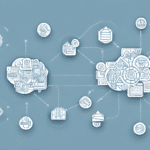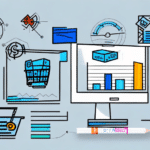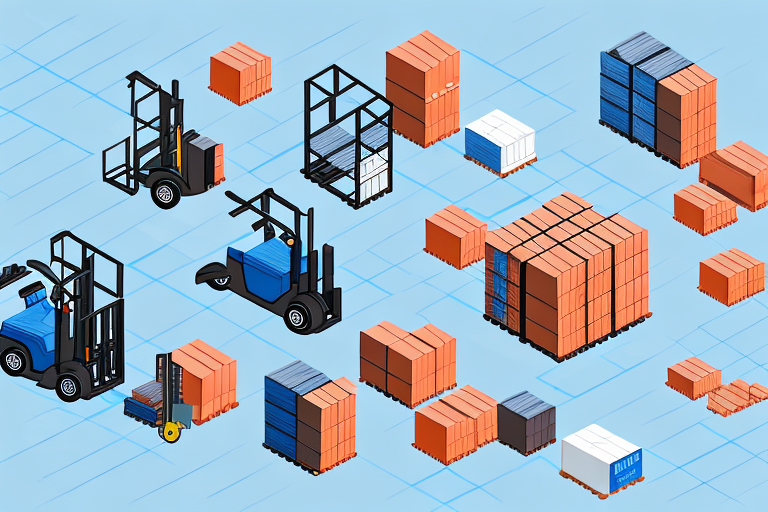Understanding the Basics of a Service Level Agreement (SLA)
If you're operating within the business landscape, the term Service Level Agreement (SLA) is likely familiar to you. But what precisely constitutes an SLA, and why is it pivotal for your business operations? This article delves into the fundamentals of SLAs, outlining their key components, various types, and the myriad benefits they offer. We'll guide you through constructing an effective SLA, share best practices for managing and implementing one, and caution against common pitfalls when drafting SLAs. Additionally, we'll explore how to measure performance against SLA metrics, the significance of SLAs in vendor management and outsourcing relationships, legal considerations, real-life case studies, future trends, and underscore the necessity of a robust SLA for every business.
What is a Service Level Agreement (SLA) and Why is it Important?
An SLA is a formal contract between a service provider and a customer that delineates the expected level of service and the metrics for evaluating that service. Key elements of an SLA include the services to be delivered, the responsibilities of both the provider and the customer, quality and performance standards, and penalties for non-compliance. According to a 2023 report by Gartner, effective SLAs can improve customer satisfaction by up to 25% and reduce service-related disputes by 30%.
SLAs are crucial as they establish clear expectations, minimize misunderstandings, and provide a framework for measuring and enhancing service quality. This clarity fosters trust and strengthens the business relationship between the provider and the customer.
One significant advantage of implementing an SLA is the management of expectations. By explicitly defining the scope of services and performance standards, both parties can prevent misinterpretations and conflicts, thereby saving time and resources while safeguarding the service provider's reputation.
Moreover, SLAs serve as a catalyst for continuous improvement. Regular evaluation of the metrics and performance standards within the SLA allows both parties to identify improvement areas and collaboratively implement changes. This iterative process can lead to enhanced service quality, increased customer satisfaction, and a more resilient business partnership.
Key Components of a Service Level Agreement (SLA)
An effective SLA typically encompasses the following essential components:
- Service Description: A comprehensive outline of the services to be provided.
- Service Levels: Specific performance metrics to gauge service quality, such as uptime, response time, and resolution time.
- Responsibilities: Clearly defined roles and obligations of both the service provider and the customer.
- Penalties: Consequences for failing to meet service level targets, which may include service credits or financial penalties.
- Reporting Requirements: The schedule and format for service performance reports.
- Service Hours: The operational hours during which services will be provided.
- Coverage Hours: The specific hours during which the service coverage is guaranteed.
- Escalation Procedures: The steps to escalate service issues to higher management levels.
- Termination Clause: Conditions under which the SLA can be terminated by either party.
SLAs can vary significantly based on the type of service offered and the customer's needs. Some might include additional elements like security requirements, disaster recovery plans, and service level credits. It is imperative for both the service provider and the customer to meticulously review and negotiate the SLA terms to ensure alignment with their specific requirements and expectations.
Types of Service Level Agreements (SLAs)
SLAs come in various forms tailored to different contexts and requirements:
- Customer-Based SLAs: Customized to the needs of individual customers or specific customer groups.
- Service-Based SLAs: Focused on the service being provided rather than on a particular customer.
- Multi-Level SLAs: Applicable to complex services requiring multiple service level targets and tiers.
- Internal SLAs: Used internally within an organization to define service standards and responsibilities among departments.
By incorporating diverse metrics such as response time, resolution time, uptime, and availability, SLAs help businesses monitor service provider performance and ensure adherence to agreed-upon service levels. According to a 2023 survey by IT Service Management, businesses with well-defined SLAs reported a 20% increase in operational efficiency and a 15% boost in customer retention.
Benefits of Having a Service Level Agreement (SLA) in Place
Implementing an SLA offers numerous advantages, including:
- Improved Service Quality and Customer Satisfaction: Clear benchmarks ensure consistent service delivery.
- Clear Expectations and Accountability: Defined roles and metrics hold both parties accountable.
- Reduced Conflicts and Disputes: Minimizes misunderstandings through transparent agreements.
- Enhanced Communication and Collaboration: Facilitates open dialogue regarding service performance and challenges.
- Continuous Improvement: Ongoing assessments identify areas for service enhancement.
- Protection Against Service Interruptions: Defined protocols mitigate the impact of service disruptions.
- Cost Savings: Increased efficiency and productivity lead to lower operational costs.
An SLA establishes a structured framework for measuring and reporting service performance, enabling both the service provider and the customer to monitor progress and pinpoint improvement areas. This structured approach can also be the foundation for negotiating service level credits or penalties if service levels fall short. Overall, an SLA ensures that both parties are aligned in their expectations and committed to delivering high-quality services.
How to Create an Effective Service Level Agreement (SLA)
Creating a robust SLA involves several critical steps:
- Define the Scope of Services: Clearly outline the services to be provided, including detailed descriptions.
- Identify Key Service Metrics and Performance Targets: Determine the critical metrics that will measure service quality and set achievable performance targets.
- Set Clear and Measurable Service Level Objectives: Establish concrete and quantifiable objectives to ensure accountability.
- Establish Responsibilities: Define the roles and responsibilities of both the service provider and the customer.
- Document Escalation Processes: Develop clear procedures for escalating and resolving service issues.
- Define Reporting Requirements and Frequency: Specify how and when service performance will be reported.
- Include a Termination Clause: Outline conditions under which the SLA can be terminated by either party.
- Regularly Review and Update the SLA: Ensure the SLA remains aligned with evolving business goals and customer needs.
Developing an effective SLA requires more than just checklist adherence. It necessitates a deep understanding of the needs and expectations of both the service provider and the customer, fostering open communication and collaboration throughout the process.
Additionally, it is vital to ensure that the SLA is legally binding and enforceable. Consulting with legal experts during the drafting process can help ensure that all terms are compliant with relevant laws and regulations, and that the agreement is fair and equitable for both parties.
Best Practices for Implementing and Managing a Service Level Agreement (SLA)
To successfully implement and manage an SLA, consider the following best practices:
- Effective Communication: Ensure that both parties comprehend the SLA terms and maintain ongoing, transparent communication regarding service performance and issues.
- Define and Measure Service Level Metrics: Establish clear, measurable metrics and consistently monitor and report performance against these standards.
- Collaborative Problem Solving: Adopt a proactive and collaborative approach to addressing service issues and escalations to minimize disruptions and customer impact.
- Commitment to Continuous Improvement: Regularly assess SLA performance data to identify improvement opportunities and implement necessary corrective actions.
- Senior Management Buy-In: Secure support from senior management to ensure the SLA receives appropriate priority and resources, and to demonstrate a commitment to ongoing improvement.
Common Mistakes to Avoid When Drafting a Service Level Agreement (SLA)
When drafting an SLA, be mindful to avoid these common pitfalls:
- Unclear or Ambiguous Language: Ensure that all terms are precise and unambiguous to prevent misinterpretation.
- Unrealistic or Unattainable Service Level Objectives: Set achievable targets to maintain credibility and prevent setting up for failure.
- Lack of Alignment with Customer Needs and Business Objectives: Customize the SLA to reflect the specific needs and goals of the customer and the business.
- Inadequate Monitoring and Reporting Processes: Implement robust mechanisms for tracking and reporting service performance.
- Insufficient Escalation and Resolution Processes: Define clear procedures for escalating and resolving service issues promptly.
- Inadequate Penalties for Service Level Failures: Establish fair and enforceable penalties to hold parties accountable for non-compliance.
- Lack of Regular Review and Updating: Periodically reassess and update the SLA to ensure it remains relevant and effective.
How to Measure Performance Against SLA Metrics
Assessing performance against SLA metrics involves consistent monitoring and reporting of agreed-upon service level indicators. Establish clear reporting mechanisms and schedules within the SLA, and regularly review and analyze the data to detect trends and identify areas for enhancement. Leveraging tools like ShipScience Performance Monitoring can facilitate real-time tracking and comprehensive reporting. If service levels fall short of expectations, it is essential for the provider and customer to collaboratively identify and address the root causes to restore service quality.
The Role of SLAs in Vendor Management and Outsourcing Relationships
SLAs play a pivotal role in vendor management and outsourcing by providing a structured framework for defining and measuring performance, assigning responsibilities, and addressing issues. According to the ShipScience Vendor Management Guide, SLAs ensure that both parties are aligned with business objectives and working towards common goals. Additionally, they offer a mechanism for ongoing performance monitoring and reporting, facilitating timely improvements and fostering a productive outsourcing relationship.
Legal Considerations for SLAs: What You Need to Know
As legally binding contracts, SLAs must meticulously define all terms and receive agreement from both parties. Ensure that the SLA adheres to relevant laws and regulations, and clearly delineate any intellectual property rights involved. Consulting a qualified legal professional during the SLA drafting process is advisable to ensure the agreement is enforceable and protects the interests of both parties. For more insights, refer to the ShipScience Legal Considerations for SLAs.
Case Studies: Real-Life Examples of SLAs in Action
Numerous real-life instances demonstrate the effectiveness of SLAs across various industries. For example, in the IT services sector, an SLA might specify network uptime metrics, response times for help desk requests, and the availability of software and hardware systems. In the financial services industry, an SLA could define turnaround times for processing loan applications. A 2023 case study by ShipScience highlighted how a leading IT firm improved its service delivery by 20% and reduced customer complaints by 35% after revising their SLA to include more precise performance metrics and regular review processes.
Future Trends in Service Level Agreements: What's Next?
The evolution of SLAs is expected to incorporate increasingly sophisticated performance metrics and leverage advanced analytics tools for enhanced monitoring and reporting. Future trends may include:
- Dynamic SLAs: Adaptable agreements that can be modified in real-time to meet changing customer needs and business objectives.
- AI and Machine Learning Integration: Utilizing AI to predict service issues and automatically adjust SLAs based on performance data.
- Enhanced Analytics: Advanced data analytics to gain deeper insights into service performance and drive continuous improvement.
- Greater Emphasis on Customer Experience: Focusing on metrics that directly impact customer satisfaction and loyalty.
- Increased Collaboration: Encouraging more collaborative approaches between service providers and customers in SLA formulation and management.
These advancements will likely result in more flexible, responsive, and customer-centric SLAs, aligning closely with the dynamic nature of modern business environments.
Conclusion: Why Every Business Needs a Solid Service Level Agreement (SLA)
In summary, an SLA is a critical component of any business relationship that involves service delivery. It ensures clear mutual expectations, provides a foundation for measuring and enhancing service quality, and fosters trust between the service provider and the customer. By adhering to best practices in creating and managing SLAs, businesses can maintain alignment with customer needs and business objectives, driving continuous improvement and sustaining high-quality service delivery. For more resources on crafting effective SLAs, visit ShipScience Resources.




















